Visit Epidaurus: Ancient Theater, Villages & Beaches
From ancient healing sanctuaries to legendary...
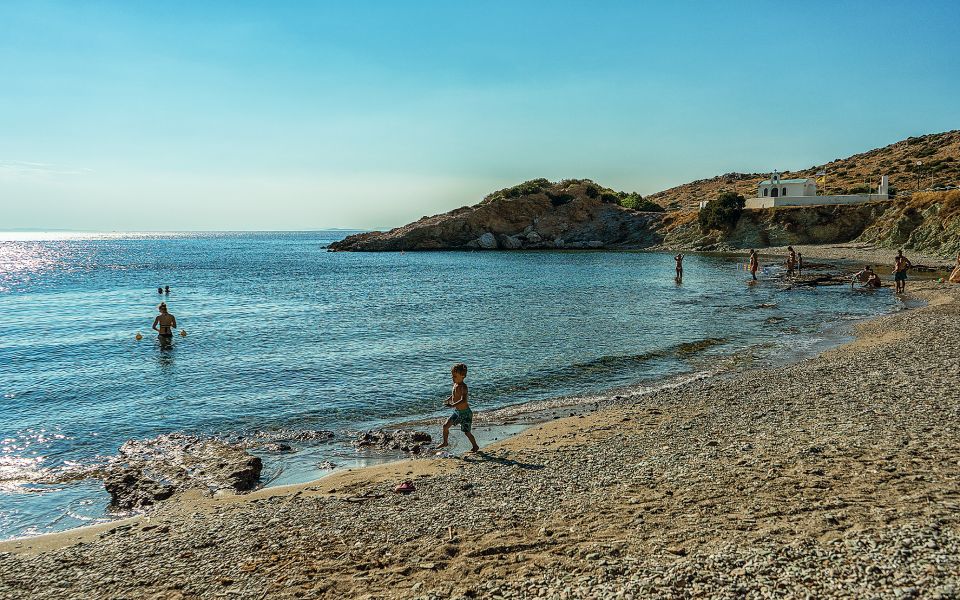
Katafygi Beach
© Marika Tsouderou
Once you’ve passed both Alykes in Anavyssos and Thymari further along on Sounio Avenue, you ‘ll come across a sign for Aiolos, a building cooperative of the National Bank, located on a curve in the road in Palaia Fokaia. The larger of its two beaches is visible from the road before you reach the settlement, while the smaller one is accessible via the settlement itself. Both are pebble beaches. Because they’re sheltered from both north and south winds, the waters are tranquil, and they also deepen gradually, which is ideal for kids. The little Church of Panaghia Katafygiotissa stands right where a craggy outcropping separates the two beaches. Snow-white and modest, this small place of worship stands on a stretch of coast that offered locals a place to hide and a conveniently discreet escape route, particularly whenever political tensions ran high.
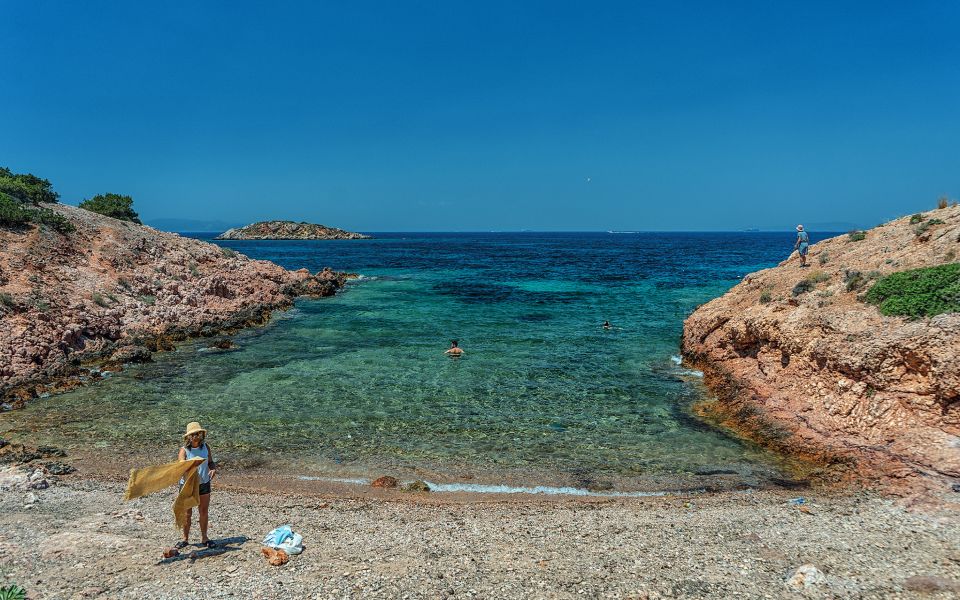
Kladiou Bay
© Marika Tsouderou
Kladiou Bay, which is nestled between the beaches of Kavouri and Akti Vouliagmenis, holds many pleasant surprises in store. This quiet, natural anchorage has clear turquoise and blue waters, smaller coves that you can discover and explore while swimming, white sands, and little shady spots ideal for laying out your towel. To get there, turn right onto the little road just after Ai-Yiorgis. Directions from your GPS will lead you to the end of the road. Leave your car in the shade (trees are to be found on both sides) and follow the cobblestone path, which at some points has a number of steps. The vegetation at the start of the path is dense: prickly-pear trees, olive trees, oleanders, pine trees and kermes oaks cover the hillside that you’re descending. The beach has a number of lentisk shrubs, both in the sand and on the rocks.
Tip: be sure to bring along water and any other supplies you may need.
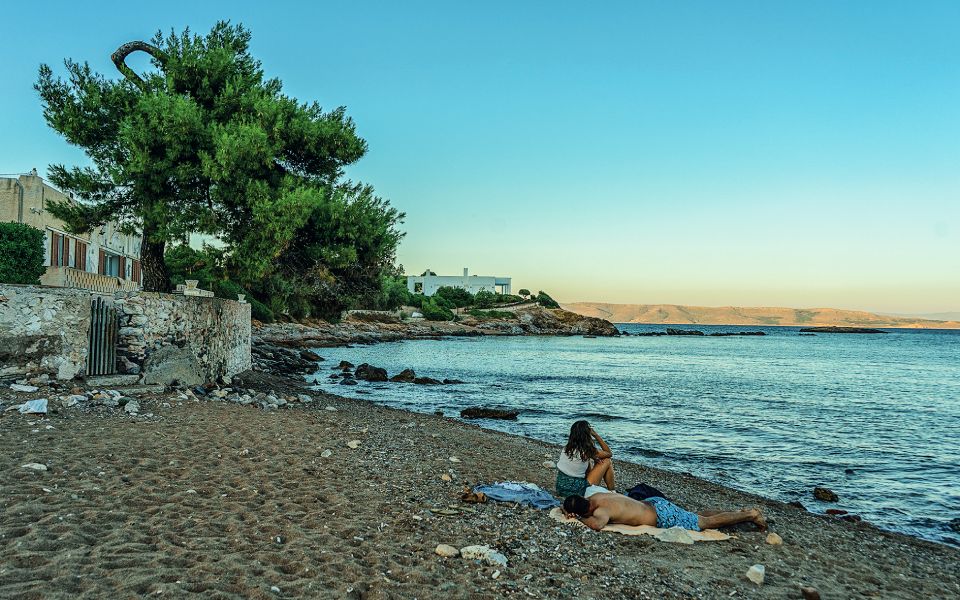
Kavatza Beach
© Marika Tsouderou
A dip at Kavatza conjures memories of childhood summers, evoking the days before beach bars entered into the picture, times when you would just find a good spot in the shade under some tamarisk trees and play hide-and-seek behind the bushes. It’s a medium-sized beach, and at some points the vegetation runs right down to the water. There are also two old abandoned houses that help you understand what life must have been like here in bygone days. If you’re coming from Athens, you’ll find the beach after you pass the Temple of Poseidon. It lies just a few meters from the road, and a single curve separates it from Syrtaki Taverna (114 Souniou, Tel. (+30) 22920.391.25), where you can head to for a meal following your swim. You should note that your GPS will tell you when you’re above the beach but won’t show any way to get to there from the road, so be sure to look for the little bridge with the metal bars. From there, you’ll be able to make your way down on foot and, once you’ve walked a few dozen meters, the whole beach will unfold before your eyes. You need to be a bit careful driving because the road is full of curves and, consequently, it’s easy to overshoot the turn-off. What’s more, only a small section of the beach is visible from the road, keeping the existence of such an attractive beach a valuable secret.
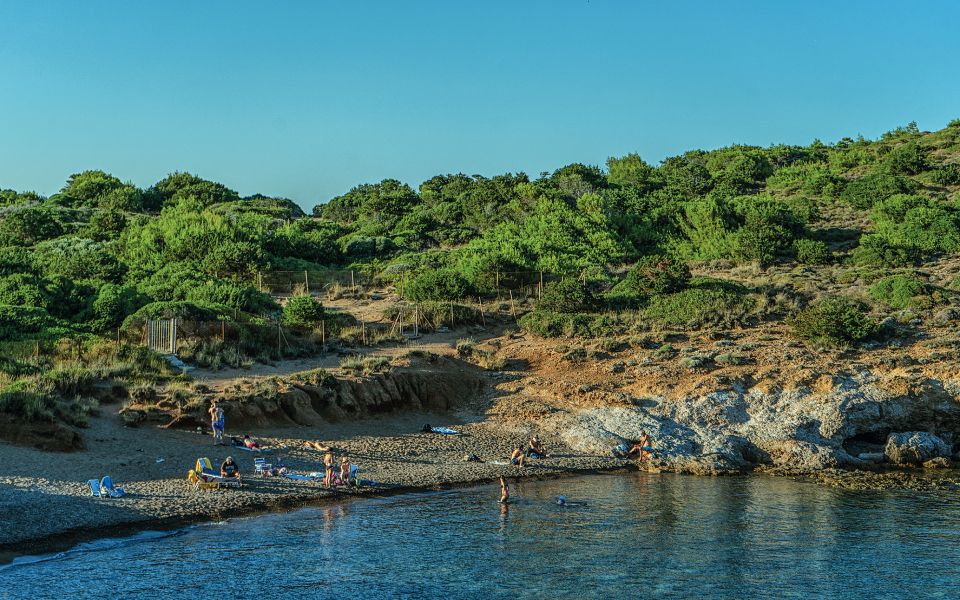
Vamvakousi Bay
© Marika Tsouderou
Its name comes from the well-known Vamvakousi bakery (61st km on Sounio Avenue, Tel. (+30) 22920.392.61), a good place to make a stop to pick up some supplies (their tasty carob breadsticks are well worth sampling). Very few people, however, are aware that about 150m behind the bakery is a beautiful beach where locals hang out. Take the little road located to the right of the building and follow it to the end. When you see the small opening with the tamarisk trees and oleanders, continue along the trail on your right and, after about 20 meters on a sandy trail, you’ll come to the beach. The small bay in front of the beach is narrow and flanked by high sides, so from early on in the evening one part of the beach is in shade. On one end, an old landslide has created a natural pool, which you can reach either by walking over the fallen rocks (these extend out into the sea) or by swimming there. The beach is not sandy, but it does have very small pebbles and clear, azure waters.
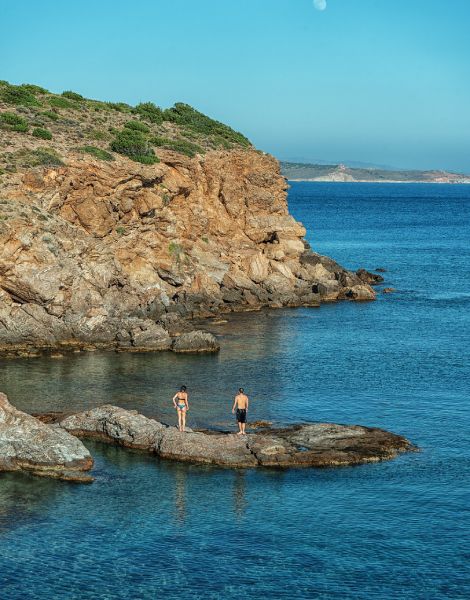
Tsiou Beach
© Marika Tsouderou
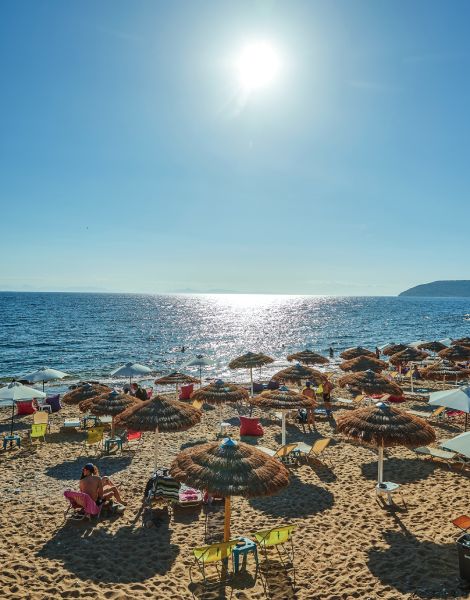
Thymari Beach
© Dimitris Vlaikos
Although we’d looked at the map and followed the directions given by the GPS, we still needed to ask someone, “Is this the right way to Tsiou Beach?” The first two people we stopped were unable to help, but the third provided us with the information we needed: “Follow the sign that says ‘Akrotiri’ until you reach a flat, open space. Park your car there and go down to the beach on foot. You’ll see a trail.” Indeed, we found the lay-by, where another three vehicles had already parked, with ease. We stood back from the edge of the rocks that encircle the beach, surveying the scene from up high: tranquility; clear, azure waters; and very few swimmers in the sea. The buzz surrounding this beach grows louder with each passing year; to date, however, the difficulty in reaching it has safeguarded it from the crowds. Tip: be sure to bring all the necessities (water, food and whatever else you’ll require) with you.
Thymari is located on the 55th kilometer of Sounio Avenue, the road that winds along the Attic coastline and links Athens and Sounion. Because of its many twists and turns, this route demands special attention. That may be why so many drivers overlook the charms of the area, preferring to keep their eyes fixed on the road. Two enticing beaches are to be found on the same bay – one is sandy, the other pebbly. They are named after a local settlement. For those interested in facilities, there’s a beach bar that’s not usually very crowded or noisy. Alternatively, you can put up your own beach umbrella and procure any essentials either from the bar or from a big kiosk located on the opposite side of Sounio Avenue.
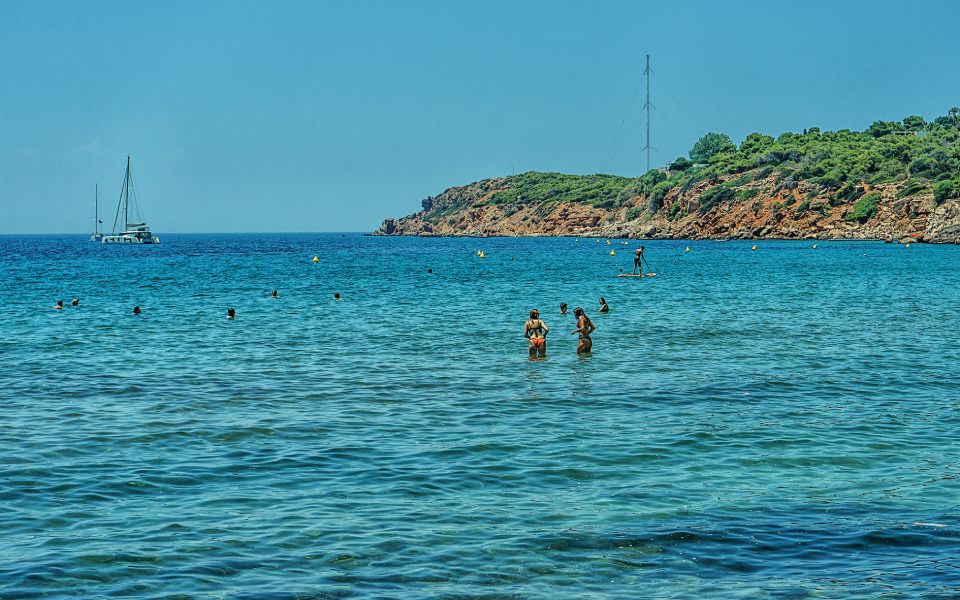
Archiepiskopi Beach
© Marika Tsouderou
Turn off of Kavouriou Avenue onto Litous Street and head in the direction of the Margi Hotel (11 Litous, Tel. (+30) 210.892.9000). Keep in mind that, after your swim, you might want to stop back here at this hotel to enjoy a drink, a revitalizing smoothie or some food. Park near the end of Litous Street before it reaches the sea, not far from the Oceanis Café, and look for the metal bars indicating where the Margi property ends. That is the location of the entrance point to a grove that will lead you to Archiepiskopi Beach. Follow the well-trodden path and, when it’s possible, the sound of the sea. You’ll come to a small beach that’s a favorite among young people, small groups of friends, and couples, all of them scattered about on the sand, some with umbrellas, others with tents set up near the rocks. Be mindful of the weather, as northerly winds can send seaweed ashore on one of its sides. If you swim about 20 meters straight out, you’ll notice Zen (formerly Niriides), a serviced beach over on your right that offers sun loungers and all the usual comforts. There’s a little road that leads there.
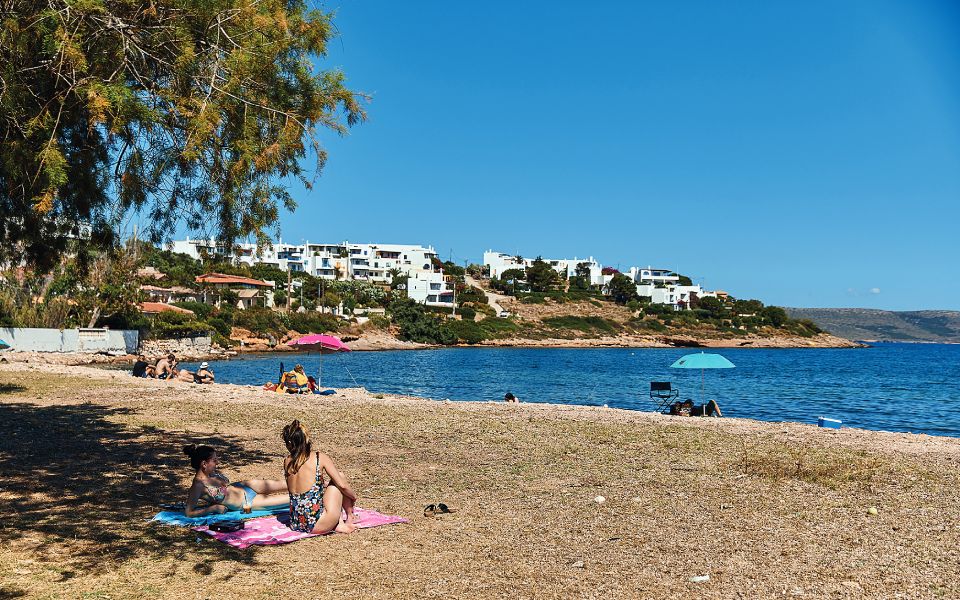
Pounta Zeza
© Dimitris Vlaikos
Are you keen on swimming around a sunken city? According to historical records and findings brought to light by underwater archaeological activities, this was once the location of an ancient settlement. The beach is sandy and easily accessed; there’s a sign on Sounio Avenue telling you where to turn off. Just five minutes later, you’ll have reached the shore and will be choosing the tamarisk tree that will shade you. In the past, one section of the beach had sun loungers for rent while the other part was for general public use. This year, it is expected that sun loungers will be placed in sections of both Pounta Zeza and the nearby Limani Passa by the beginning of August. Until recently, it was mostly local area residents who enjoyed the beach; however, of late its fame has spread to the other municipalities in Attica, owing, no doubt, to its clear waters, and to the fact that the bay is sheltered from the north wind. If you go early in the morning, there’s a possibility that you’ll run into kids from the nearby summer camp.
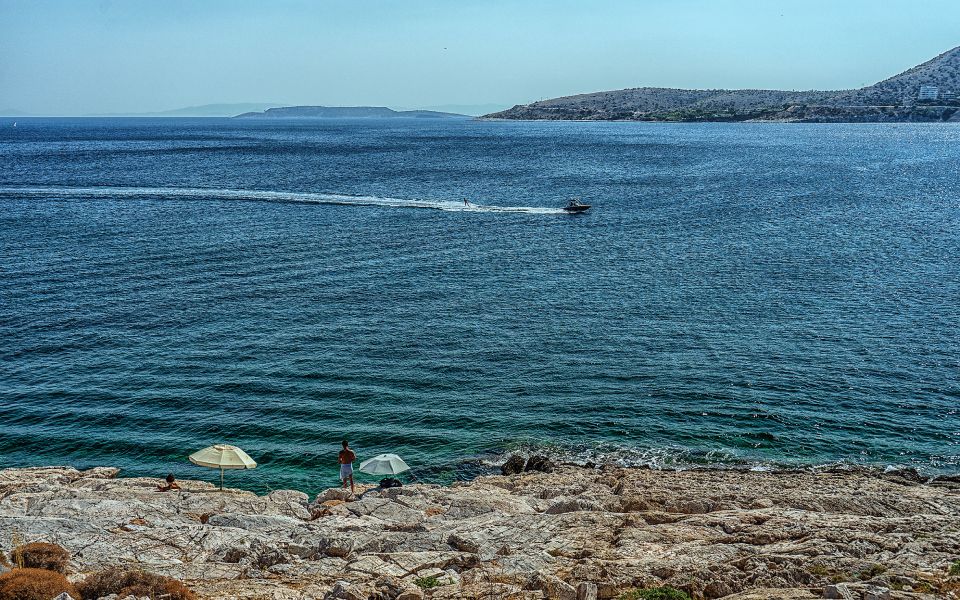
Ribas Beach
© Marika Tsouderou
Ribas was a legendary nightspot in Varkiza. It also lent its name to the beach located just down below it. The northern section of the beach is where you should head if you’re seeking the nudist area. If not, simply take a comfortable seat on the big white rocks or dive straight into the clear blue waters, which attract swimmers who don’t mind giving up the comforts of a serviced beach. There are spots where your feet can touch the seabed and where you can safely enter or exit the sea; in other words, you don’t need to be Indiana Jones to enjoy the place!
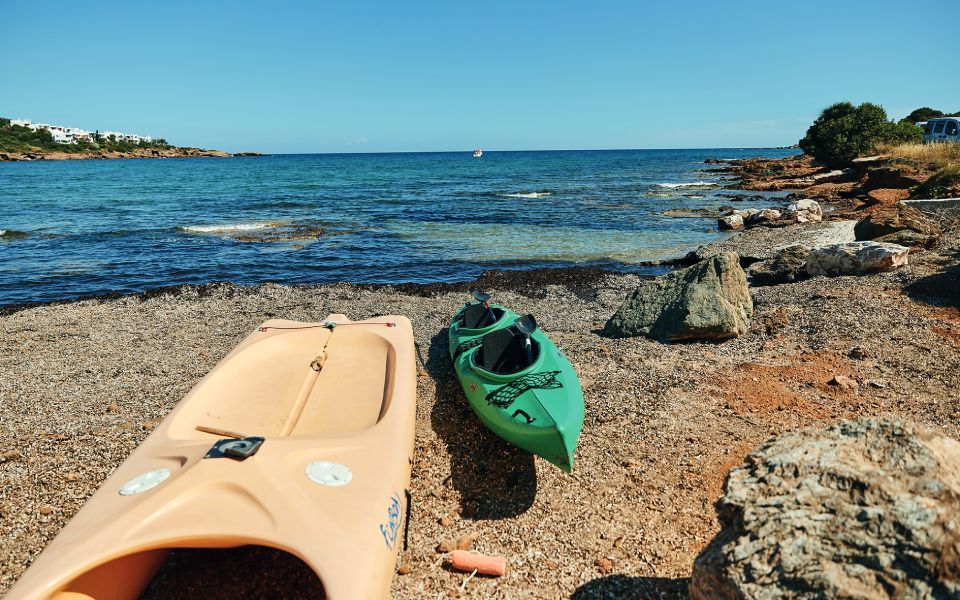
Limani Passa
© Dimitris Vlaikos
Poseidonia was an important ancient settlement, and the capital of the demos of Sounio in antiquity. Even today, the visitor can see a number of archaeological remains scattered around the area, which includes Pasalimani, Poseidonia’s beach. Today, Limani Passa (or Akti Poseidonias) attracts swimmers not only from the surrounding areas, but from the whole of Attica as well. Access is easy, the waters are crystal-clear, the sand is fine and you will also find little trees offering shade (it is probable that, by the end of July, beach umbrellas will also have been put up in one of its sections). What a lot of people might not know is that the area inland from the beach has been designated an archaeological site. Significant ancient finds have been unearthed there, including parts of columns, which you can see if you take a walk around the area.
From ancient healing sanctuaries to legendary...
A guided journey across Athens’ storied...
Swim in thermal springs, explore untouched...
Mimosa shrubs and sweet acacia and...